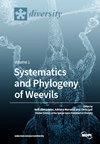First Report of Diseases and Compromised Health Conditions on Hard Corals around Rodrigues Island, Southwest Indian Ocean
IF 2.1
3区 生物学
Q2 BIODIVERSITY CONSERVATION
引用次数: 0
Abstract
Coral diseases represent a prominent menace to coral reefs and to the associated ecological services they provide to the surrounding coastal communities. Studies on diseases and compromised health conditions (CHCs) on hard corals in the Southwest Indian Ocean (SWIO) are scarce, and their consequences are often overlooked. This study aimed to establish the baseline prevalence of diseases and CHC of hard corals around Rodrigues Island. Coral disease and CHC prevalence were visually assessed using 2 m × 50 m belt transects at eight sites around the island. This is the first report of four coral diseases, namely White Plague (WP), White Syndrome (WS), Black Band (BB), and Growth Anomalies (GA), and two CHCs, two forms of Pink Pigmentation Responses (PPR)—Pink Patches (PP) and Pink Line Syndrome (PLS)—observed on six genera of hard corals from the island of Rodrigues. PP on Fungia (15.92 ± 5.65%), followed by the WS on Montipora (4.67 ± 3.72%) and GA on Gardineroseris (4.16 ± 4.16%), so far unreported from the SWIO, were the most prevalent around the island. The least prevalent disease was BB on Montipora (0.13 ± 0.13%). Although the overall disease and CHC prevalence for Rodrigues Island (0.98 ± 0.30%) were much lower than the surrounding islands in the SWIO, the observations of these diseases and CHCs on hard corals and relevant environmental parameters warrant further in-depth characterization to better inform coral reefs management and conservation actions.西南印度洋罗德里格斯岛周围硬珊瑚疾病和健康状况的首次报告
珊瑚病对珊瑚礁及其向周围沿海社区提供的相关生态服务构成了严重威胁。关于西南印度洋(SWIO)硬珊瑚的疾病和健康状况受损(CHCs)的研究很少,其后果往往被忽视。本研究旨在建立罗德里格斯岛周围硬珊瑚的基线患病率和CHC。采用2米× 50米带样带在全岛8个地点对珊瑚病和CHC患病率进行了目测评估。本文首次报道了在罗德里格斯岛6属硬珊瑚上观察到的4种珊瑚疾病,即白鼠疫(WP)、白综合征(WS)、黑带(BB)和生长异常(GA),以及2种CHCs, 2种粉红色色素沉着反应(PPR) -粉红色斑块(PP)和粉红色线综合征(PLS)。Fungia上的PP(15.92±5.65%)、Montipora上的WS(4.67±3.72%)和Gardineroseris上的GA(4.16±4.16%)是全岛最常见的三种,目前尚未在世界卫生组织中报道。发病率最低的是BB(0.13±0.13%)。虽然罗德里格斯岛的总体疾病和CHC患病率(0.98±0.30%)远低于周围岛屿,但这些疾病和CHC对硬珊瑚的影响及其相关环境参数值得进一步深入研究,以更好地为珊瑚礁管理和保护行动提供信息。
本文章由计算机程序翻译,如有差异,请以英文原文为准。
求助全文
约1分钟内获得全文
求助全文
来源期刊

Diversity-Basel
Environmental Science-Ecological Modeling
CiteScore
3.40
自引率
12.50%
发文量
925
审稿时长
11 weeks
期刊介绍:
Diversity (ISSN 1424-2818) is an international and interdisciplinary journal of science concerning diversity concept and application, diversity assessment and diversity preservation. It is focused on organismic and molecular diversity. It publishes reviews, regular research papers and short notes in the regular issues. Related news and announcements are also published. Our aim is to encourage scientists to publish their experimental and theoretical results in as much detail as possible. Therefore, there is no restriction on the length of the papers. Full experimental details must be provided so that the results can be reproduced.
 求助内容:
求助内容: 应助结果提醒方式:
应助结果提醒方式:


